Did you ever want to hug a tree, but you didn’t know its name? Did you ever feel angry that a Jacaranda is more recognised and admired than a Flindersia? When these things happened to us, we organised ourselves with a flexible, affordable and adaptable labelling system to help us learn more about the bush around us.
Twenty years ago, we planted thirty rainforest trees with mysterious, complicated botanical names. These trees were carefully labelled with laminated inkjet-printed labels and their planting date and location were recorded on a spreadsheet known as ‘The List’. This List had initially been compiled from historical botanical surveys of adjacent properties and consisted of species considered to probably exist, or to have existed, on our property.
The vegetation on our property is a mix of dry rainforest, vine forest and eucalypt. The List was divided into categories: Rainforest, Eucalypt, Vines, Orchids, Ferns and Grasses and each separate category was sorted alphabetically by botanical name and numbered: Rainforest 1 – 299, Eucalypt 300 – 399, Vines 400 – 499 etc. Many trees were planted using the same recording system. While the trees we planted grew big, the inkjet printing on the labels disappeared.
In 2008, Land for Wildlife organised a botanical survey of our property. As we walked the tracks, our botanist, Daniel, recorded the species he saw, and we took photos and wrote down the strange names with the help of our Land for Wildlife Officers. Daniel sent us an alphabetically arranged species list with no reference to the physical location of the trees recorded. However, any new species on Daniel’s list were added to The List, and our familiarity with the strange plant names began to grow.
A patient neighbour was next to walk the tracks. We armed ourselves with aluminium tags with numbers written with a permanent-ink pen. These we attached to the various trees. We took photos and wrote down the tree names as we walked. Any new names were added to The List and our knowledge grew some more. However, the ink was not permanent and disappeared before we got around to doing anything more permanent.
In 2013, we organised ourselves for a series of botanical surveys, again provided by Land for Wildlife. We obtained aluminium tags and aluminium nails from Forestry Tools. We already had a set of number punches. On the day of the survey, we used foil-like temporary aluminium tags with the numbers imprinted using an old biro. Our Land for Wildlife Officer attached these to the various trees in number sequence along the tracks, we took photos, and David, our other botanist, patiently recorded the species name together with the number on our temporary tag. After each survey, we received David’s alphabetically arranged list co-related to the temporary tag numbers.
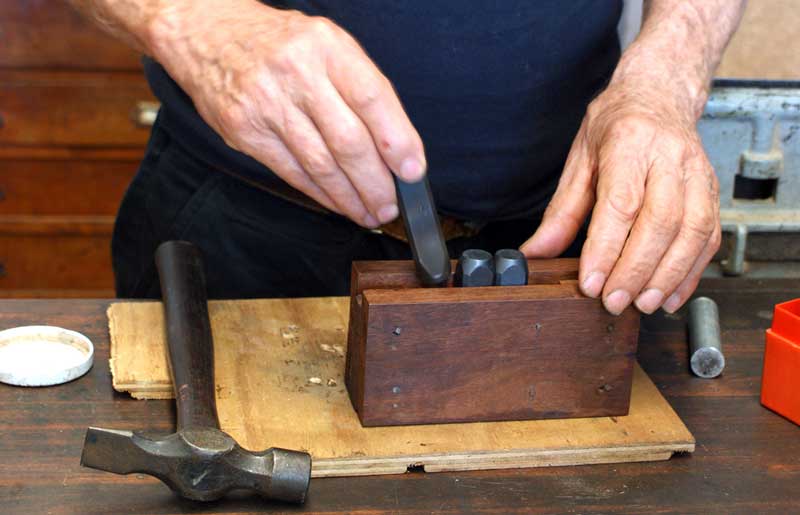
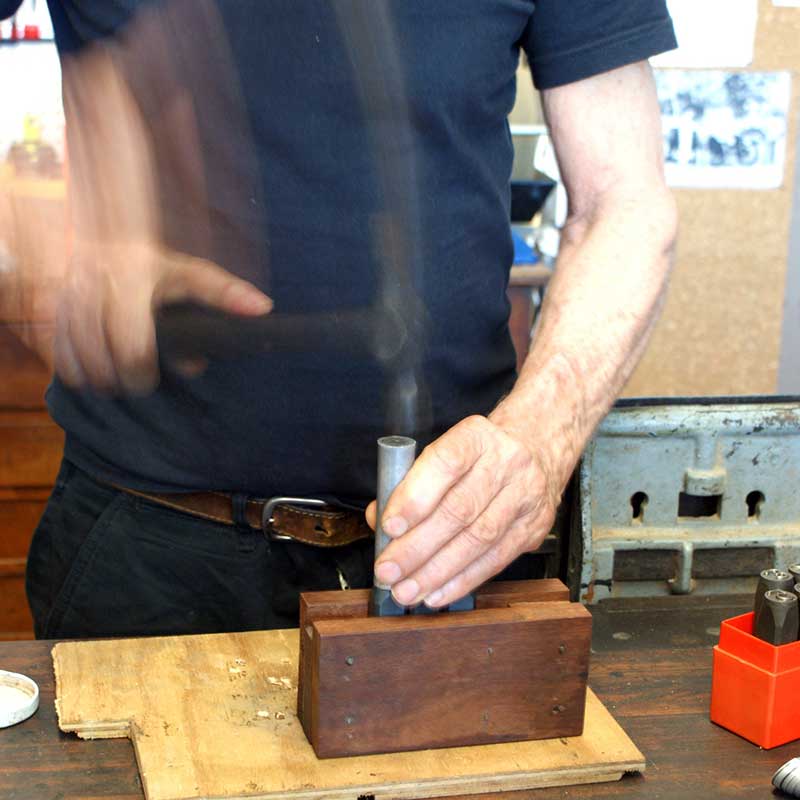
We immediately made and attached the permanent tags to the identified trees. After this initial tagging, any new species on The List just gets the next number and is therefore out of number sequence. However, a spreadsheet is adaptable and can be printed with various sorting sequences, such as by family name, or by botanical name.
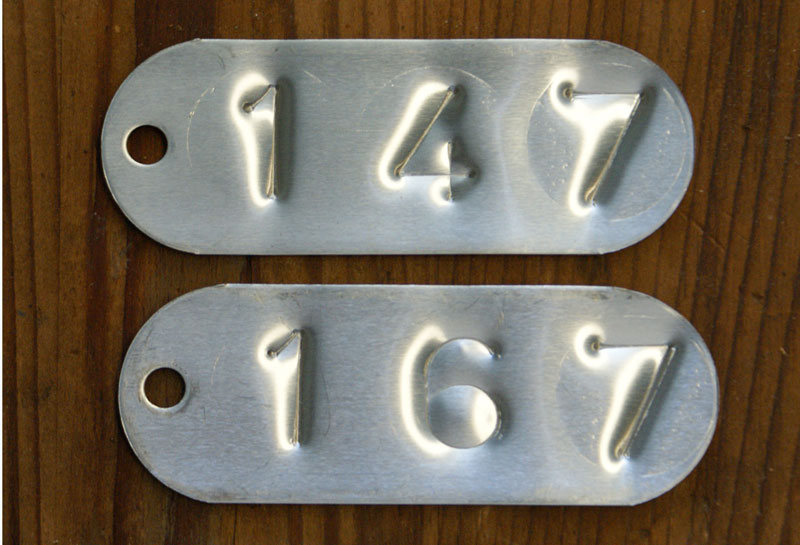
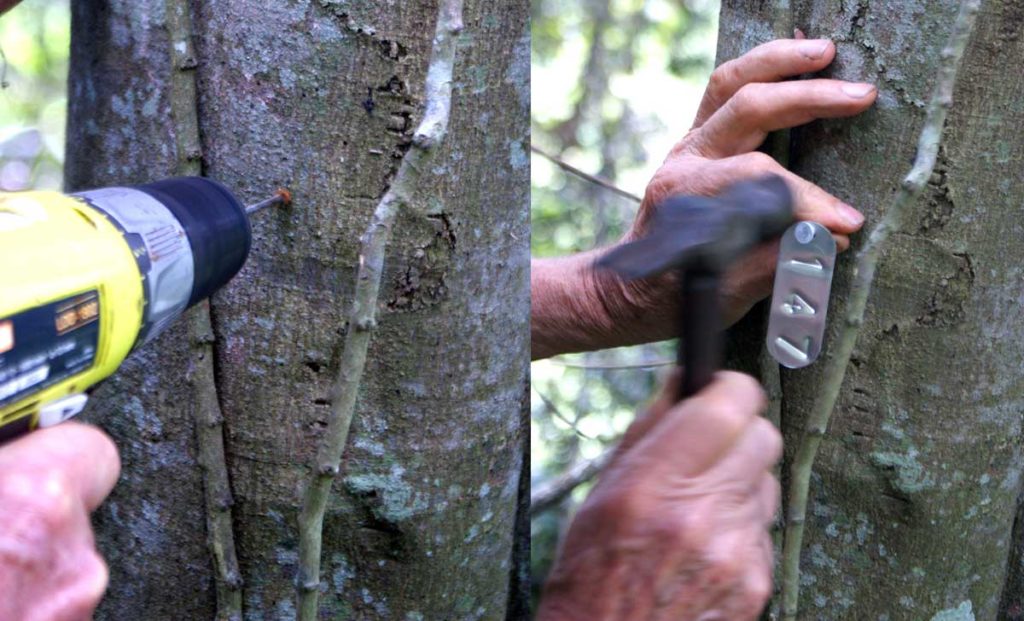
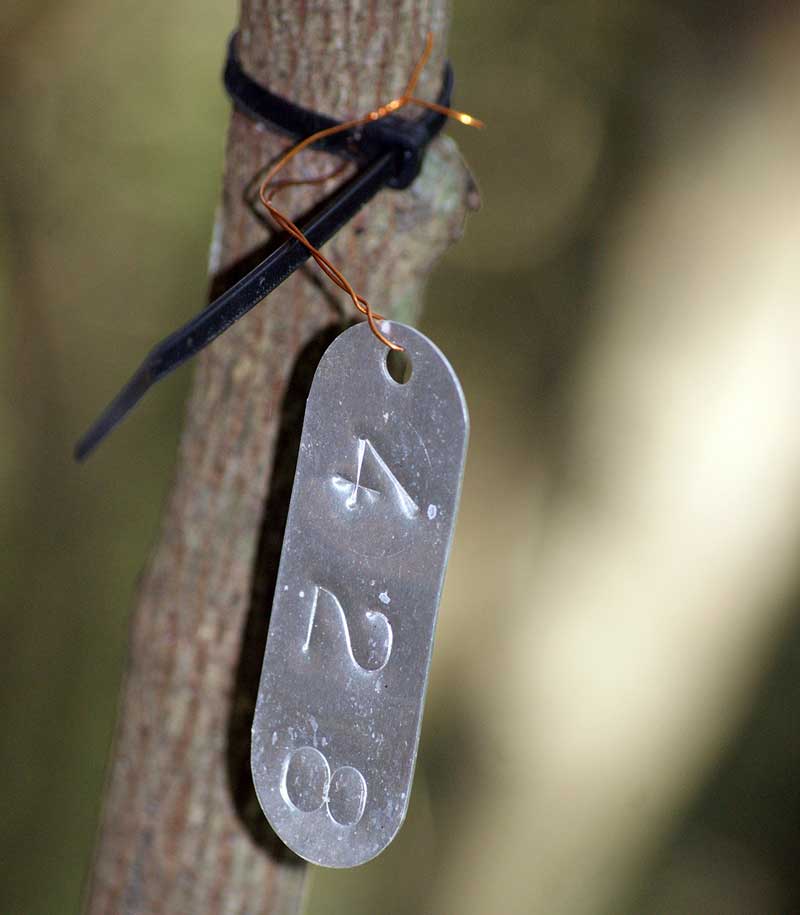
Sorted by number, The List can be printed as a pocket version, for reference to the tag numbers when walking in the bush. Having our trees labelled and identifiable is helping us to learn about the bush we live in. Hopefully, those who follow will know more about our native flora than we did when we started. Hopefully, they will know more about Flindersias than Jacarandas and be able to hug a tree and know its name.
Recently, we noticed red fruit in an unidentified tree, were able to confidently identify it as Mischocarpus anodontus and label it with its tag 147.
Article and photos by Tina Heybroek
Land for Wildlife member
Upper Brookfield, Brisbane

Interesting work
Awesome article Tina ! Just purchased the tags, nails and wire. Thanks for inspiration to tag our Mt Crosby lfwl property ! Vicky
Thanks for info, very keen to do this now!!
do you have a copy of this excel sheet?
cheers
Hi Alex. Glad it has spurred your interest. Sorry, but the booklet shown in this article was created by the property owners.
Excel spreadsheets of Queensland flora are available from the Qld Herbarium https://www.qld.gov.au/environment/plants-animals/plants/native-plants
Cheers.